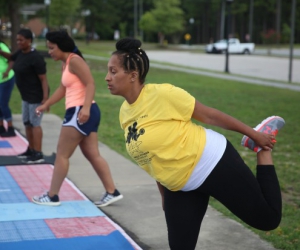
Pitt Experts Active in Drafting National Physical Activity Guidelines
A pair of University of Pittsburgh faculty members, along with 15 other top researchers from across the nation, recently steered the creation of the federal 2018 Physical Activity Guidelines Advisory Committee Scientific Report for the U.S. Department of Health and Human Services.
John Jakicic, a Distinguished Professor in the School of Education and Director of the Healthy Lifestyle Institute, and Kirk Erickson, a Professor in the Departments of Psychology and Geriatric Medicine, were among the authors of the 800-page report that represents a systematic review of the scientific literature surrounding physical activity and health throughout the course of a decade.
This report, released last Friday, updates the 2008 edition, and is open to public comment through March 31.
“The U.S. Department of Health and Human Services (HHS) is grateful to Dr. John Jakicic, Dr. Kirk Erickson, and all the members of the Physical Activity Guidelines Advisory Committee for their dedicated service and thorough review of the current science on the connections between physical activity and health,” said Don Wright, MD, MPH, Deputy Assistant Secretary for Health. “HHS will review the Committee’s Scientific Report, as well as comments from the public and federal agencies as it is developing the next edition of the Physical Activity Guidelines for Americans.”
The report focuses on the effect of physical activity to the health of all Americans, spanning across the lifespan to include children, adults, and older adults. Among the highlights of the report are the unique contributions to aspects of health that include brain health and cognition, quality of life, and others, and unique characterizes the importance of a physical activity for both prevention and treatment of chronic conditions. a
Jakicic chaired the subcommittee studying Cardiometabolic Health and Weight Management, while also participating in the Dose Response, Promotion of Physical Activity, and Sedentary Behavior subcommittees.
“One very important contribution of this report is how individuals can integrate physical activity into their lifestyle, with some health benefits realized by simply moving around in short bouts, possibly as short as one minute at a time, and by sitting less throughout the day,” Jakicic said. “Thus, this report provides a road map, helping doctors and other health professionals in guiding the public on the types and amounts of physical activity that provide health benefits.
Erickson led the subcommittee studying Brain Health, in addition to serving on the subcommittee for Aging.
For the first time this report highlights the impact of physical activity on brain function and behavior throughout the life course, demonstrating that physical activity can be a highly-effective, cost-efficient, and easily adoptable approach to protecting and preserving brain and mental health.
Erickson reports: “As individuals in the United States and in other countries around the world struggle with escalating healthcare costs while also determining ways of maintaining or improving their health and quality-of-life, this report demonstrates that physical activity has a profound effect on many health conditions across the lifespan and that becoming more physically active should be a fundamental part of every person’s life.”
Overall, some the Committee’s key findings in the 2018 Scientific Report include:
In addition to disease prevention benefits, regular physical activity provides a variety of benefits that help individuals sleep better, feel better, and perform daily tasks more easily.
Some benefits happen immediately. A single bout of moderate-to-vigorous physical activity will reduce blood pressure, improve insulin sensitivity, improve sleep, reduce anxiety symptoms, and improve cognition on the day that it is performed.
Physical activity reduces the risk of a large number of diseases and conditions. The past 10 years have greatly expanded the list of diseases and conditions for which greater amounts of physical activity reduce the risk.
The benefits of physical activity can be achieved in a variety of ways.
Efforts to promote physical activity in a variety of settings and socioecological levels can be effective. The 2018 Scientific Report includes a summary of major findings from the large body of scientific literature about promoting physical activity through different interventions.
The Department of Health and Human Services will now use the report, as well as comments from the public and federal agencies to develop the Physical Activity Guidelines for Americans, second edition, which serves as the primary, authoritative voice of the federal government for evidence-based guidance on physical activity, fitness, and health for Americans. The guidelines are expected to be released in late 2018.




